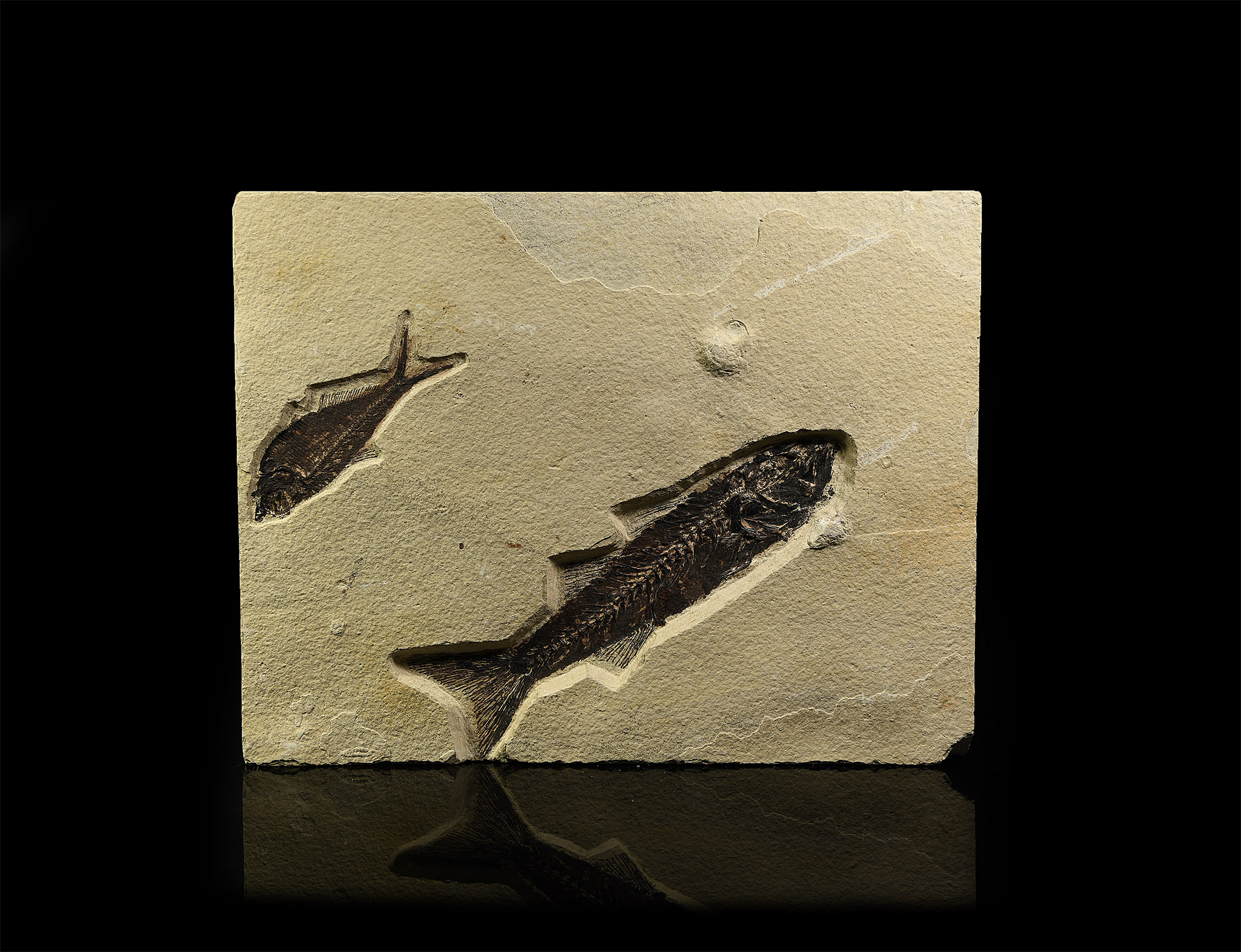NATURAL HISTORY - FOSSIL MIOPLOSUS FISH Eocene Period, 58-36 million years BP A fossil Mioplosus labracoides fish in matrix from Warfield's Quarry, Kemmerer, Green River Formation, Wyoming, USA. 280 grams, 17.5cm (7"). Fine condition. [No Reserve] Provenance From the Pradi Collection, Boston, USA; acquired during 1980s. Footnotes In southwest Wyoming (and parts of Colorado and Utah) in the Green River Formation are found some of the world's most outstanding specimens of fossil fish. The Green River system was composed of three lakes: Lake Ulinta, Lake Gosiute and Fossil Lake. These Eocene Lakes lay in a series of intermountain basins formed by geological events that uplifted the Rocky Mountains during the early Tertiary time. The Climate was much different from the desert-like climate of this area today. Both the fauna (crocodiles, alligators, boa constrictors and some subtropical fish families) and the flora (such as large palm trees) indicate a climate much like that found along the Gulf Coast today. Large amounts of ash found in the sediments indicate that volcanoes were particularly active at this time.
NATURAL HISTORY - FOSSIL MIOPLOSUS FISH Eocene Period, 58-36 million years BP A fossil Mioplosus labracoides fish in matrix from Warfield's Quarry, Kemmerer, Green River Formation, Wyoming, USA. 280 grams, 17.5cm (7"). Fine condition. [No Reserve] Provenance From the Pradi Collection, Boston, USA; acquired during 1980s. Footnotes In southwest Wyoming (and parts of Colorado and Utah) in the Green River Formation are found some of the world's most outstanding specimens of fossil fish. The Green River system was composed of three lakes: Lake Ulinta, Lake Gosiute and Fossil Lake. These Eocene Lakes lay in a series of intermountain basins formed by geological events that uplifted the Rocky Mountains during the early Tertiary time. The Climate was much different from the desert-like climate of this area today. Both the fauna (crocodiles, alligators, boa constrictors and some subtropical fish families) and the flora (such as large palm trees) indicate a climate much like that found along the Gulf Coast today. Large amounts of ash found in the sediments indicate that volcanoes were particularly active at this time.









Try LotSearch and its premium features for 7 days - without any costs!
Be notified automatically about new items in upcoming auctions.
Create an alert